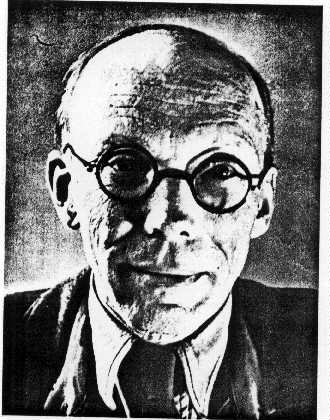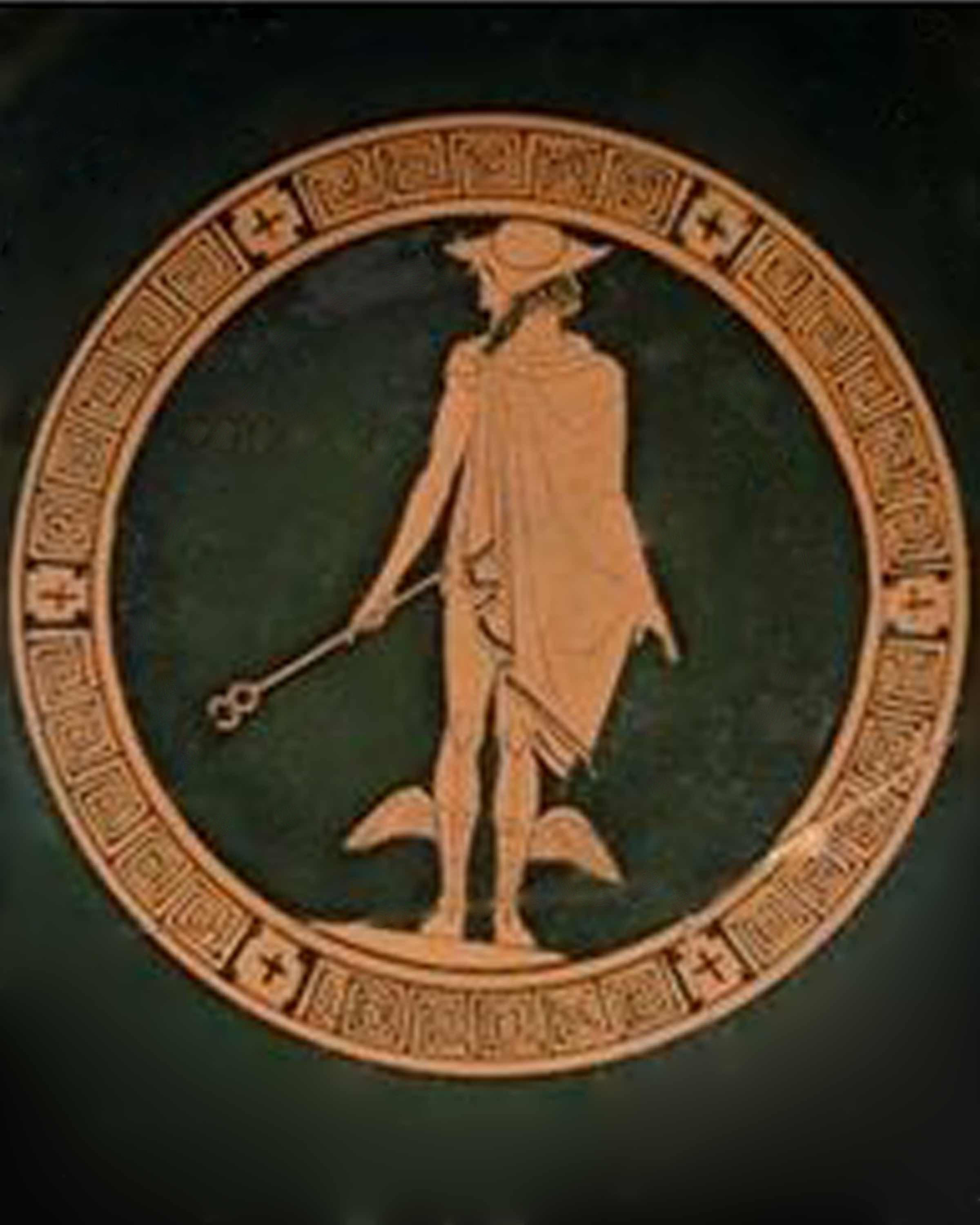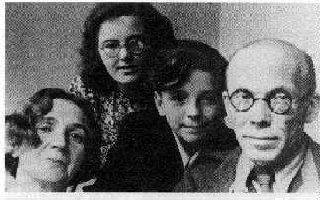Biography of Valentin Tomberg

See alternative biographical sketch from Ronald Decker and Michael Dummett's A History of the Occult Tarot (Duckworth, 2002)
The volume has been posthumously identified with the anthoposophist and Roman Catholic convert, Valentin Tomberg. Meditations sur les 22 arcanes majeurs du tarot (Aubier Montaigne, 1980), prefaced in the French edition by the Catholic theologian Hans Urs von Balthasar.
One of the most remarkable examples of the tarot's capacity to
furnish a basis for esoteric and mystic meditation can be found in
the works of
Valentin Tomberg, The latter situated the
enterprise in the framework of "spiritual readings", supported by
Christian as well as non-Christian traditions and by
esoteric exegeses. Tomberg's "inner
experience" illustrates the expansion of the field of
tarot to embrace literature and the arts; in this context von
Balthasar cites
The Greater Trumps (1950) by
Charles
Williams (1886-1945, a friend of
T.S. Eliot and
J.R.R. Tolkien).
This info about
Valentin Tomberg (b. 2.26.1900, Saint Petersburg,
d. 2.20.1973, Majorca) is based upon Antoine Faivre’s essay in
Dictionary of Gnosis & Western Esotericism
edited by Wouter J. Hanegraaff (Brill Academic) and his essay
"Analysis of the Meditations of Valentin Tomberg on the
Twenty-Two Major Arcana of the Tarot of Marseilles", in
Theosophy, Imagination, Tradition: Studies in Western
Esotericism (SUNY
series in Western Esoteric Traditions
A Russian-Baltic Lutheran by birth, already as a young man Tomberg began to move in the esoteric circles of Saint Petersburg, joining the Theosophical Society in 1917. The Bolshevik Revolution having taken a heavy toll on his family, he fled in 1918 to Tallin (Reval, in Estonia). There he married in 1922, held (after several other jobs) a position at the Estonian postal administration, and in 1925 was elected to the Vice-Presidency of the German-speaking branch of the Estonian Anthroposophical Society, the German offshoot of theosophical work as inspired by Rudolf Steiner
In 1932 Tomberg became Secretary General of the Baltic Anthroposophical Society branch. At the age of thirty-one he experienced a spiritual revelation which, he claimed, put him in contact with the angelic world.
From 1930-1938 he gave many lectures on Anthroposophy and contributed articles to journals of that movement. Some of these works were published as early as 1933 in volumes titled Anthroposophical Considerations on the Old and the New Testament, which went through several editions. The same year he married for the second time. Over the 1930s he distanced himself little by little from the Anthroposophical Society and he eventually resigned in 1937. This change of orientation was due partly to his own Christianity, which was more christocentric than Rudolf Steiner's, and partly to various conflicts within the European Anthroposophical Society Sections after Steiner's death in 1925.
In 1939 Tomberg came to Rotterdam in the Netherlands, where he gave many lectures (most of which were subsequently published), in particular on the return of Christ in the ethereal world. He then settled in Amsterdam, where he made a living as a translator and language teacher, and for many months had to hide with his family from the Nazis.
At the end of the war he converted to Catholicism, then enrolled at the University of Cologne to study Law under the direction of Ernst von Hippel, and was awarded an LLD in International Law. In this connection, he authored two treatises in German (Degeneration and Regeneration der Rechtswissenschaft, Bonn 1946, new edition 1974, and Die Grundlagen des Völkerrechts als Menschheitsrecht, Bonn 1947).
In 1948 Tomberg left Germany and definitely settled in England, where, thanks to his remarkable linguistic gifts, he held a good professional position at the BBC. He retired in 1960, and spent the rest of his life in Reading, near London, where from 1963 to 1967 he devoted himself to the writing of several works, among which are his Meditations on the Tarot. While traveling in Majorca in 1973 he died of a stroke.
Tomberg's career as an author can be divided into two main periods: the one before and the one after his conversion to Roman Catholicism. During the first, his writings were rooted primarily in the context of Steiner's Anthroposophy.
During the second, his written output was more personal and original. With the exception of his two studies in German devoted to International Law, his oeuvre consists mainly of a number of works (published either anonymously or posthumously) of an esoteric character. These – and mostly the Meditations – were to make him famous after his death.
Alternative Sketch of Tomberg's Career.
Valentin Tomberg was born in St Petersburg on 27 February 1900. His parents, of Baltic German extraction, taught him their Lutheran faith. While still an adolescent, he was drawn to Theosophy and the mystical aspects of Russian Orthodoxy and attracted to the visionary teachings of Vladimir Soloviev (1853-1900), who helped to revive the Orthodox reverence for Sophia, the hypostasis of Holy Wisdom. Tomberg knew Shmakov's Tarot book, and in 1920 he encountered some members of Mebes' group. They befriended him and tutored him in Mebes' use of the Tarot as an encyclopedic system of occultism.
During the Bolshevik Revolution and the subsequent civil war (1917-23) Tomberg's mother was fatally shot by marauders as she ventured into the streets. Valentin fled with his father and elder brother to Reval (modern Tallinn) in Estonia. He worked sporadically as a farmer, apothecary and teacher. In 1924 he gained steady employment with the Estonian postal service and began to study comparative religion and languages (Hebrew, Greek, Latin, French, English, Dutch and German) at Tatu University.
In 1925 Tomberg joined the Anthroposophical Society founded by Rudolph Steiner (1861-1925); Otto Sepp was the Secretary General of the Estonian branch. By 1930 Tomberg was promoting Anthroposophy through lectures and essays, and the Society named him to succeed Sepp when the latter died in 1931. Steiner had specified 1933 as the year of Christ's Second Coming, which would occur in the 'etheric realm'. Believers would then be able to advance their spiritual growth by immediate revelations from the 'Christ-Being'. Tomberg clung to this belief. His series of essays, Anthroposophical Studies of the Old Testament, was privately printed in 1933. Tomberg was encouraged in his spiritual aspirations by his wife, Marie Demski, a French-Polish woman who had lived in Russia. They met during their mutual exile in Estonia. Their only child, a son named Alexis, was born in 1933.
Immediately before the Second World War, Tomberg was invited to address Anthroposophist groups in Swanik, Bangor and Rotterdam. During the war years, however, his story becomes confused. He was forced to resign from the Anthroposophical Society. But was the expulsion because he was elevating himself over Rudolph Steiner, or because he was elevating Christianity over Anthroposophy? He moved to Amsterdam, where some say he was pursued by Nazis. He can next be traced to Cologne, either having been taken there by the Nazis, or having been spirited there to escape the Nazis (or to escape the Allied offensive against the Nazis in Holland). By the end of the war, he was either in a refugee camp or studying the law at the University of Cologne while Allied bombs fell on that city. We can say with certainty that he had left Holland for Germany, and that he had left Anthroposophy for Roman Catholicism.
Tomberg no longer desired a public role. In 1948 friends in England persuaded him to work as a translator at the BBC; based in Reading, he helped to monitor Soviet broadcasts. He retired at the first practical opportunity, in 1960, to write and study, and lived in seclusion with his wife and son. He died on the island of Majorca on 24 February 1973. Marie Demski Tomberg died not long after. His unfinished book, Covenant of the Heart, was posthumously printed. It includes discussions of Christ's miracles, the Ten Commandments, and the Cabalistic Name of God.
Tomberg wrote Meditations on the Tarot, a Journey into Christian Hermeticism (Amity House, Warwick, New York, 1985). It was published anonymously and posthumously, as he had requested. The book uses the Tarot de Marseille as a pretext for teaching Tomberg's theosophy, which he says is a living tradition, namely the esoteric church of St John (the 'heart' of the Church), as distinct from the exoteric church of St Peter (the 'head' of the Church). According to Tomberg, Hermeticism is not a sect or a school, but a mystical predisposition, which he hopes already connects him to his readers. Their shared destiny is to nurture esoteric Christianity until the Second Coming of Christ is complete. The book is primarily inspirational and exhortatory. Tomberg is sympathetic to non-Christian mysticism, notably yoga, Sufism and Cabalism. He avoids Rosicrucianism, perhaps because one of its seminal manifestos — the Confessio — is hostile to Catholicism. He slights all Protestant faiths, and ignores Swedenborg. He condemns dualism, whether Zoroastrian, Manichaean or Gnostic. Each of the Tarot trumps, from le Bateleur to le Monde, occasions a 'letter' to the `dear Unknown Reader'. The Fool (le Mat) is discussed in the twenty-first position, immediately before le Monde, still using the placement established by Levi. The French magus is sometimes cited, along with other occultists, in a wide range of mystics, theologians, philosophers and scholars. In his meditation on the Death card, Tomberg includes favourable remarks about Gurdjieff and Ouspensky. Meditations on the Tarot has been well received by Tarotists: it is praised by Antoine Faivre, the noted French historian of esoterism: 'There is perhaps no better introduction to Christian theosophy, to occultism, to any reflection on esoterism than this magisterial work, not that of a historian but of an inspired theosopher — a rather rare occurrence — one who is careful to respect history'.
from pp. 209-210, Ronald Decker and Michael Dummett's A History of the Occult Tarot (Duckworth, 2002)
See related pages
Anthroposophy
Rudolf Steiner
Etheric Christ
Meditations on the Tarot by Anonymous Teleconference Info
Online edition of Meditations on the Tarot by Anonymous
Pdf file of Online edition of Meditations on the Tarot by Anonymous
Index to Meditations on the Tarot
Links to Webpages about Meditations on the Tarot
Major Arcana Tarot de Marseilles Camoin- Jodorowsky

